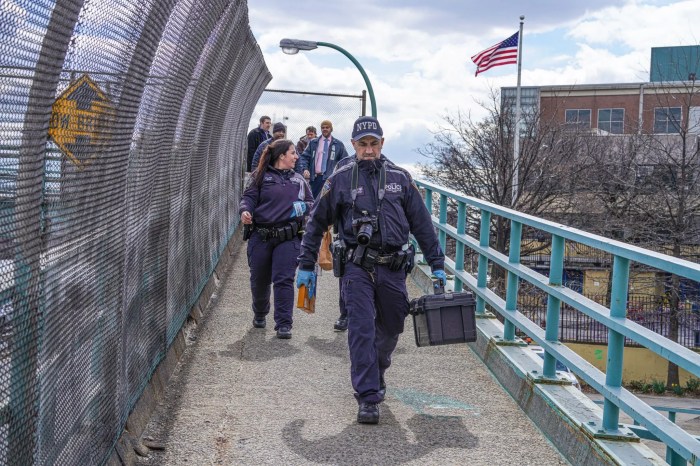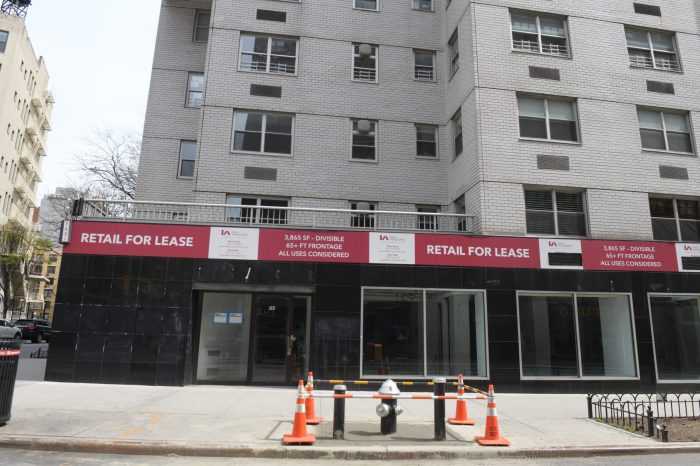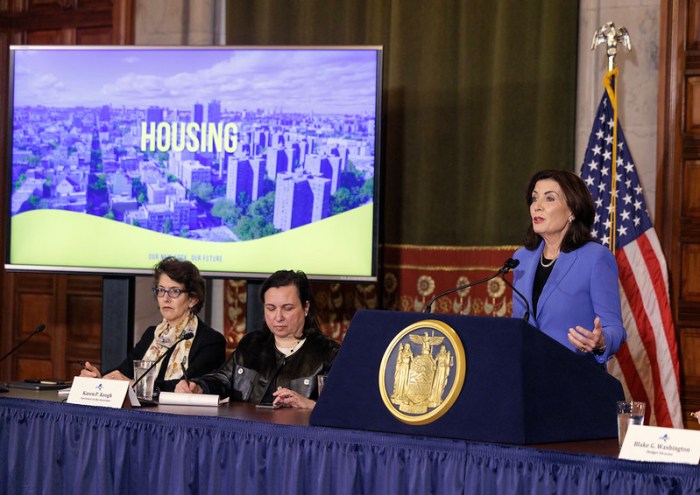BY SAM SPOKONY | Area politicians are slamming the city’s decision not to continue or expand a federally funded program that provides food benefits to people affected by Superstorm Sandy.
Until its application period ended on Dec. 18, the Disaster Supplemental Assistance Program (D-SNAP) was available to eligible Manhattan residents within the 10002 zip code — nearly all of the Lower East Side and part of Chinatown — as well as those within Coney Island and Red Hook in Brooklyn, Far Rockaway in Queens and parts of Staten Island’s southeastern shore.
D-SNAP, which is funded by the U.S. Department of Agriculture, provides replacement benefits for food stamp recipients who lose food in a disaster, while also extending benefits to many households that would not ordinarily be eligible for food stamps but suddenly need assistance.
Two coalitions of elected officials — Manhattan-based officials at the city and state level, led by state Senator Daniel Squadron, and citywide officials at the federal level, led by Congressman Jerrold Nadler — wrote letters last week urging the city’s Human Resources Administration (which is handling D-SNAP distribution) to make the program more accessible.
In particular, the city and state politicians requested for other affected parts of Lower Manhattan to be included in the program. They also asked H.R.A. to place a D-SNAP application center within the Lower Manhattan area, since currently the only two centers are in Downtown Brooklyn and Staten Island.
In addition, both groups of politicians called on H.R.A. to extend the deadline for D-SNAP applications, saying that many residents required more time to both learn about the program and reach one of the application centers.
In a Dec. 13 letter responding to those requests, H.R.A. Commissioner Robert Doar gave an outright denial of any possible expansion or extension, citing a need to use federal money “responsibly” as New York — along with other Sandy-afflicted states — continues to ask the federal government for tens of billions of dollars in federal assistance. Currently, President Obama’s $60 billion package for Sandy relief is stalled in Congress.
“Expanding the areas that are eligible for D-SNAP, as you suggest, would call into question our fiscal responsibility,” Doar wrote, “at a time when, as you know, many in Congress are reluctant to authorize the federal relief we need, especially for those in public housing,” referring to New York City Housing Authority buildings.
But Assemblymember Brian Kavanagh — who had signed on to Squadron’s letter — asserted that public housing residents would, in fact, be better served if D-SNAP were expanded to include the East Village’s 10009 zip code, which includes 10 NYCHA complexes that house a total of around 11,000 people.
“I’m very perplexed by the city’s decision, because that zip code meets their own criteria as an area that’s in need of these benefits,” said Kavanagh, whose district runs from the East Village to the edge of Midtown East. “They’ve said that they wanted to target public housing that lost services during the storm, and that’s exactly what happened in the developments along the East River.”
He added that he was similarly at odds with Hoar’s reasoning regarding fiscal responsibility.
“Of course we should be responsible with funding,” Kavanagh said. “We’re not debating that. We simply believe that they are failing to make a benefit available to a community that needs it, and that’s a mistake.”
City Councilmember Margaret Chin, whose district includes nearly all of the areas below Houston St., took issue especially with the city’s decision against placing a D-SNAP application center in Lower Manhattan. She scoffed at Hoar’s statement, in his letter, that free shuttle buses were being provided to the Downtown Brooklyn site.
“Shuttle bus? Come on!” Chin said. “There are just too many obstacles and limitations. The whole point of bringing in D-SNAP was to give people the food benefits that aren’t offered anywhere else, but is this really helping all the people who need it?”
She acknowledged that the city should be focused on acquiring all of the federal funding currently sitting in Congress — a good deal of which will certainly be used in harder-hit areas of the city — but stressed that it “doesn’t make sense” to not provide this particular service to Lower Manhattan residents who are still struggling.
Assembly Speaker Sheldon Silver also voiced his disappointment with the city’s decision, citing the struggles of Lower Manhattan residents who don’t qualify for regular food stamps, but whose incomes are still low enough to make any loss of food a devastating one.
Not focused on identifying any particular zip code, Silver said that the city should simply expand D-SNAP eligibility to include all Lower Manhattan residents whose food security has been compromised.
And Squadron — along with his aforementioned colleagues — said that he will continue to push for H.R.A. to reopen the application process now that it has already expired, as well as urge the agency to reconsider and expand the program.
“D-SNAP is meant to provide relief to families struggling in Sandy’s wake,” Squadron said. “Yet limited qualifying zip codes, application centers, and times mean that many New Yorkers in need won’t get vital food assistance. I’m disappointed in the city’s decision not to make the program as inclusive as possible.”


















